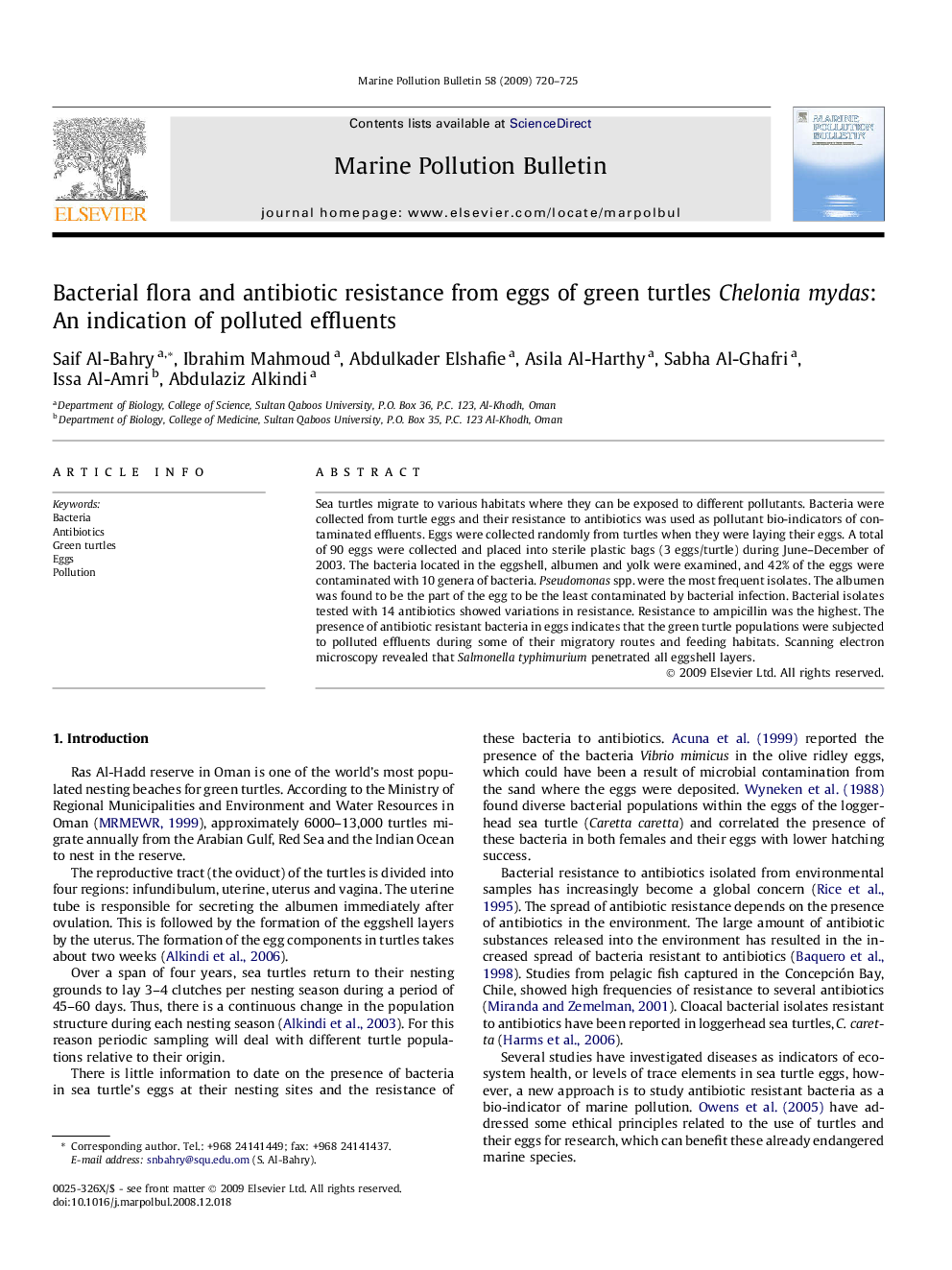| Article ID | Journal | Published Year | Pages | File Type |
|---|---|---|---|---|
| 4476963 | Marine Pollution Bulletin | 2009 | 6 Pages |
Sea turtles migrate to various habitats where they can be exposed to different pollutants. Bacteria were collected from turtle eggs and their resistance to antibiotics was used as pollutant bio-indicators of contaminated effluents. Eggs were collected randomly from turtles when they were laying their eggs. A total of 90 eggs were collected and placed into sterile plastic bags (3 eggs/turtle) during June–December of 2003. The bacteria located in the eggshell, albumen and yolk were examined, and 42% of the eggs were contaminated with 10 genera of bacteria. Pseudomonas spp. were the most frequent isolates. The albumen was found to be the part of the egg to be the least contaminated by bacterial infection. Bacterial isolates tested with 14 antibiotics showed variations in resistance. Resistance to ampicillin was the highest. The presence of antibiotic resistant bacteria in eggs indicates that the green turtle populations were subjected to polluted effluents during some of their migratory routes and feeding habitats. Scanning electron microscopy revealed that Salmonella typhimurium penetrated all eggshell layers.
